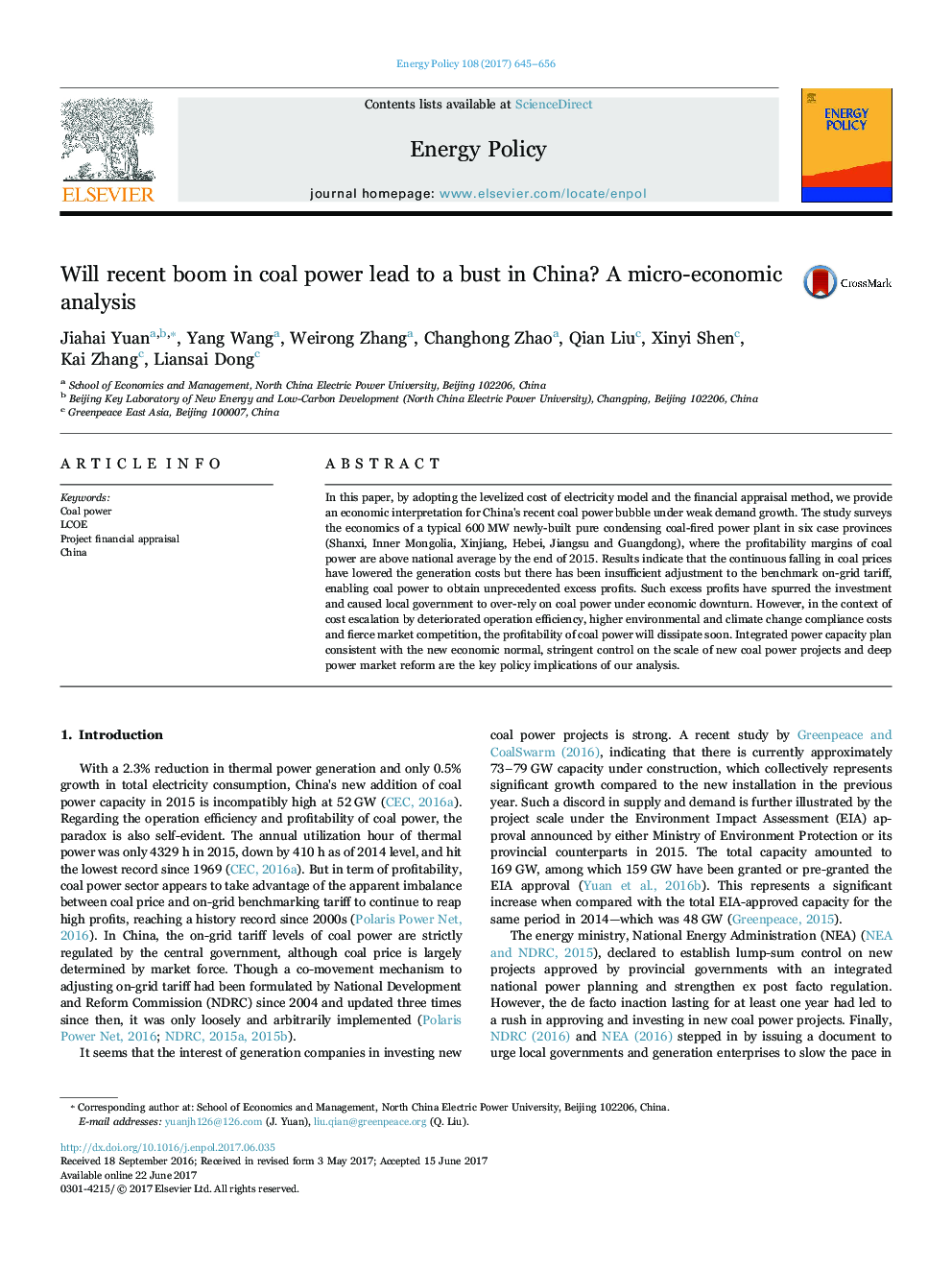| Article ID | Journal | Published Year | Pages | File Type |
|---|---|---|---|---|
| 5105663 | Energy Policy | 2017 | 12 Pages |
Abstract
In this paper, by adopting the levelized cost of electricity model and the financial appraisal method, we provide an economic interpretation for China's recent coal power bubble under weak demand growth. The study surveys the economics of a typical 600Â MW newly-built pure condensing coal-fired power plant in six case provinces (Shanxi, Inner Mongolia, Xinjiang, Hebei, Jiangsu and Guangdong), where the profitability margins of coal power are above national average by the end of 2015. Results indicate that the continuous falling in coal prices have lowered the generation costs but there has been insufficient adjustment to the benchmark on-grid tariff, enabling coal power to obtain unprecedented excess profits. Such excess profits have spurred the investment and caused local government to over-rely on coal power under economic downturn. However, in the context of cost escalation by deteriorated operation efficiency, higher environmental and climate change compliance costs and fierce market competition, the profitability of coal power will dissipate soon. Integrated power capacity plan consistent with the new economic normal, stringent control on the scale of new coal power projects and deep power market reform are the key policy implications of our analysis.
Keywords
Related Topics
Physical Sciences and Engineering
Energy
Energy Engineering and Power Technology
Authors
Jiahai Yuan, Yang Wang, Weirong Zhang, Changhong Zhao, Qian Liu, Xinyi Shen, Kai Zhang, Liansai Dong,
